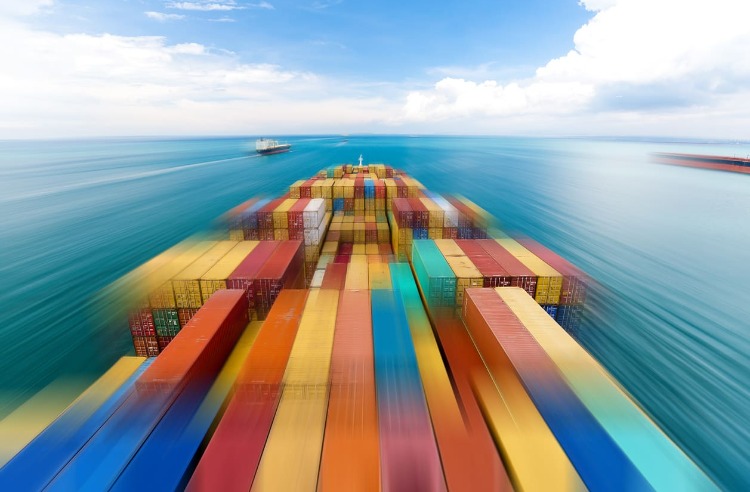Flexitank: Why It’s a Good Option for Shipping Wine
The global shipping crisis continues to put immense pressure on the wine industry.
Container shortages have left wine products scrambling to find alternatives to traditional shipping methods.
If you need to ship fresh and young wines in high volumes, a cost-effective, efficient and safe way to ship wine in bulk is with a flexitank. It is a good option because you can double the volume transported in a single container compared to bottled wine. A flexitank holds 24,000 litres, whereas a conventional 20-foot container can fit around 9,900 litres of wine.
Flexitanks are robust fillable bags made of a single or multiple layers of food-grade polyethylene that can fit into a standard container, turning it into a bulk liquid transport solution.
The ones designed and manufactured by Hillebrand Gori are specifically made to protect product quality, as it makes its way from the winery to the bottling facility.
Why use a flexitank to ship wine?
Bulk wine shipping is the process of transporting wine in large volumes for bottling at destination.
When it comes to shipping wine, your top priority is making sure the product gets from point A to B on time and in good condition. And because wine is a delicate product that needs to be shipped in a way that preserves its quality, it’s important to consider how you’re going to transport it.
Shipping wine in flexitanks is one solution that can help protect your wine’s quality during the transport process.
Here’s why:
They can hold large quantities of wine, so you can ship more at once, reducing shipping costs.
They are made from food-grade materials and are recyclable.
They offer a greater thermal inertia than bottles because the large amount of liquid in the flexitank makes it harder for thermal changes to impact the product.
Hillebrand Gori’s flexitanks are designed with a protective barrier to prevent against oxidation and taint compounds.
Keep in mind that only wine that has not gone through the ageing process can be shipped in flexitanks and bottled at destination.
Does only entry-level wine belong in a flexitank?
Don’t believe the myth that only entry-level wine belongs in a flexitank.
The reality is that any wine can be shipped in a flexitank, from budget-friendly options to high-end labels. Bulk shipping wine and the perception of it by winemakers has changed over the years as the benefits of using flexitanks have become more widely known.
The benefits of using a flexitank include:
Large volume shipping
Better cost and CO2e (carbon dioxide equivalent) per litre shipped
Less susceptibility to temperature fluctuations
According to one report, the global flexitank market is expected to reach $3.31 billion by 2028.
Is using flexitank to ship wine sustainable?
Flexitanks are made from food-grade polyethylene, which is a strong, durable and recyclable material.
In fact, Hillebrand Gori research based on a 20-foot container shows a flexitank reduces emissions per litre by -38% compared to cased goods on the same routing. Carbon Footprint Ltd also conducted research comparing flexitanks to International Organisation Standardisation (ISO) tanks. And that research shows that emissions during a carbon life cycle are lower for flexitanks.
When it comes to cost-effectiveness, safety and sustainability, flexitanks offer many benefits over other methods of shipping wine in bulk.
How Hillebrand Gori can help
Our flexitanks are designed with product owners like winemakers to mitigate the risks of oxidation — this is why they include patented barrier technology to stop oxygen ingress. Made from a 100% virgin-grade polyethylene (LLDPE) film that’s 100% recyclable, we manufacture all of our flexitanks in-house to maintain strict control over the whole process.
Here are a few more things you need to know about our flexitanks:
They’re manufactured in an FSSC22000-certified environment
They’re single-use, so there is zero contamination risk
They come in sizes of 10,000-24,000 litres.
If you have any questions about flexitanks or need help choosing the right shipping option for your wine, contact us. We’re always happy to help.
The primary difference is that flexitanks are only suitable for non-hazardous liquids. ISO tanks can carry hazardous and non-hazardous liquids. Flexitanks are also more easily accessible in the market.
Yes, flexitank and flexibag are often used interchangeably to describe the same product. Both refer to a large, flexible container used for shipping liquids. The term "flexitank" is more commonly used in the industry.
The installation process typically takes between 70 and 90 minutes, depending on the tank size and the installer's experience. Trained professionals must do the installation to ensure safety and proper usage.
The recycling method will depend on the location of where the flexitank is discharged. It's important to consult with your flexitank provider and local authorities for proper disposal and recycling guidelines. At Hillebrand Gori, we arrange- the recovery and disposal of our flexitanks in locations where it is possibl

.png?sfvrsn=fc4f657e_1)



